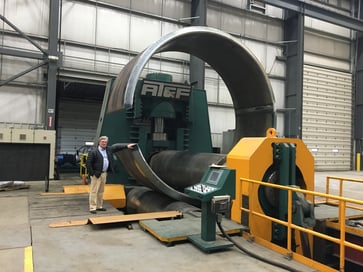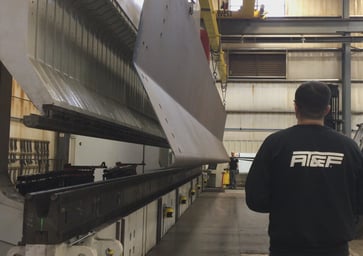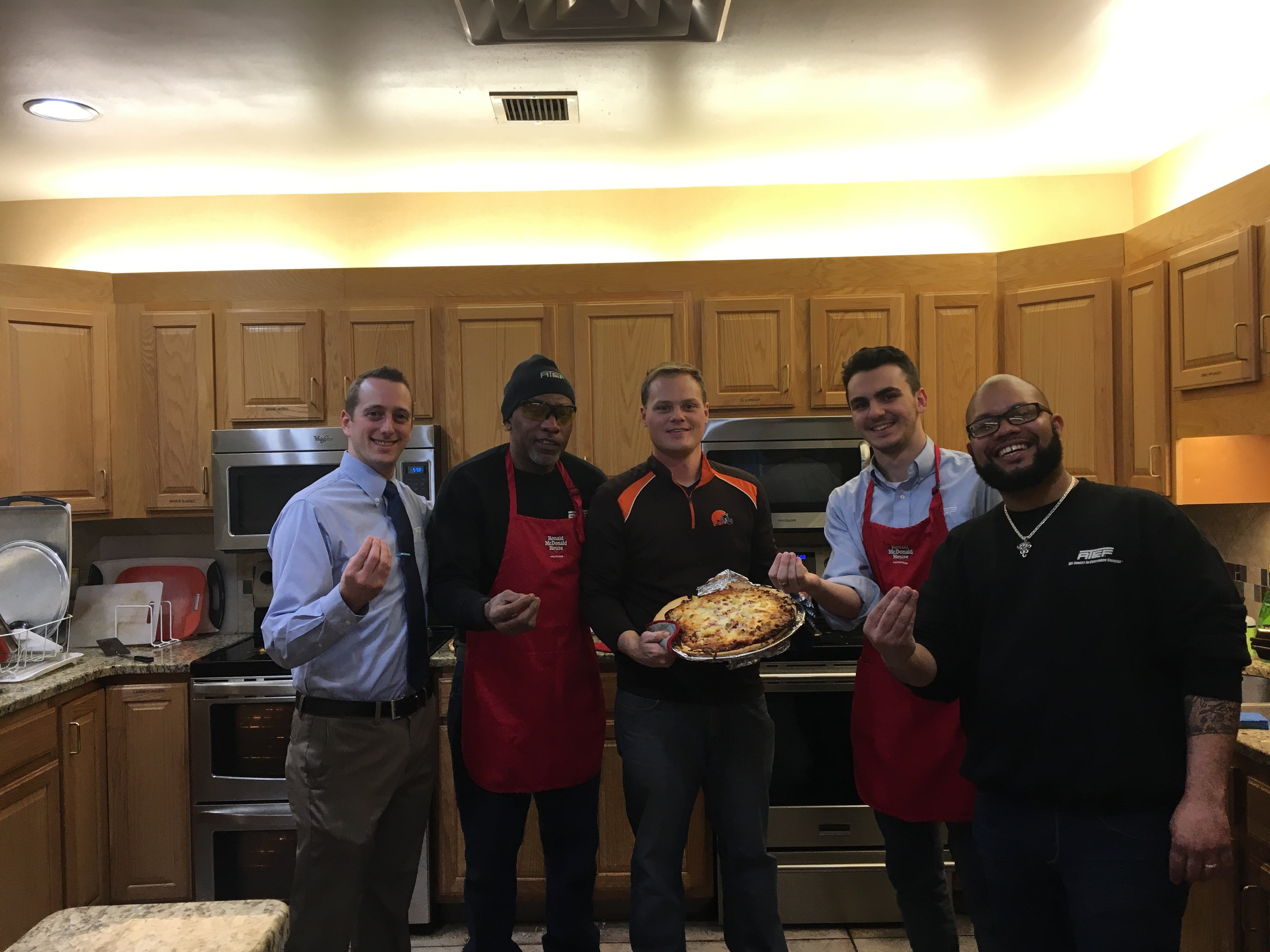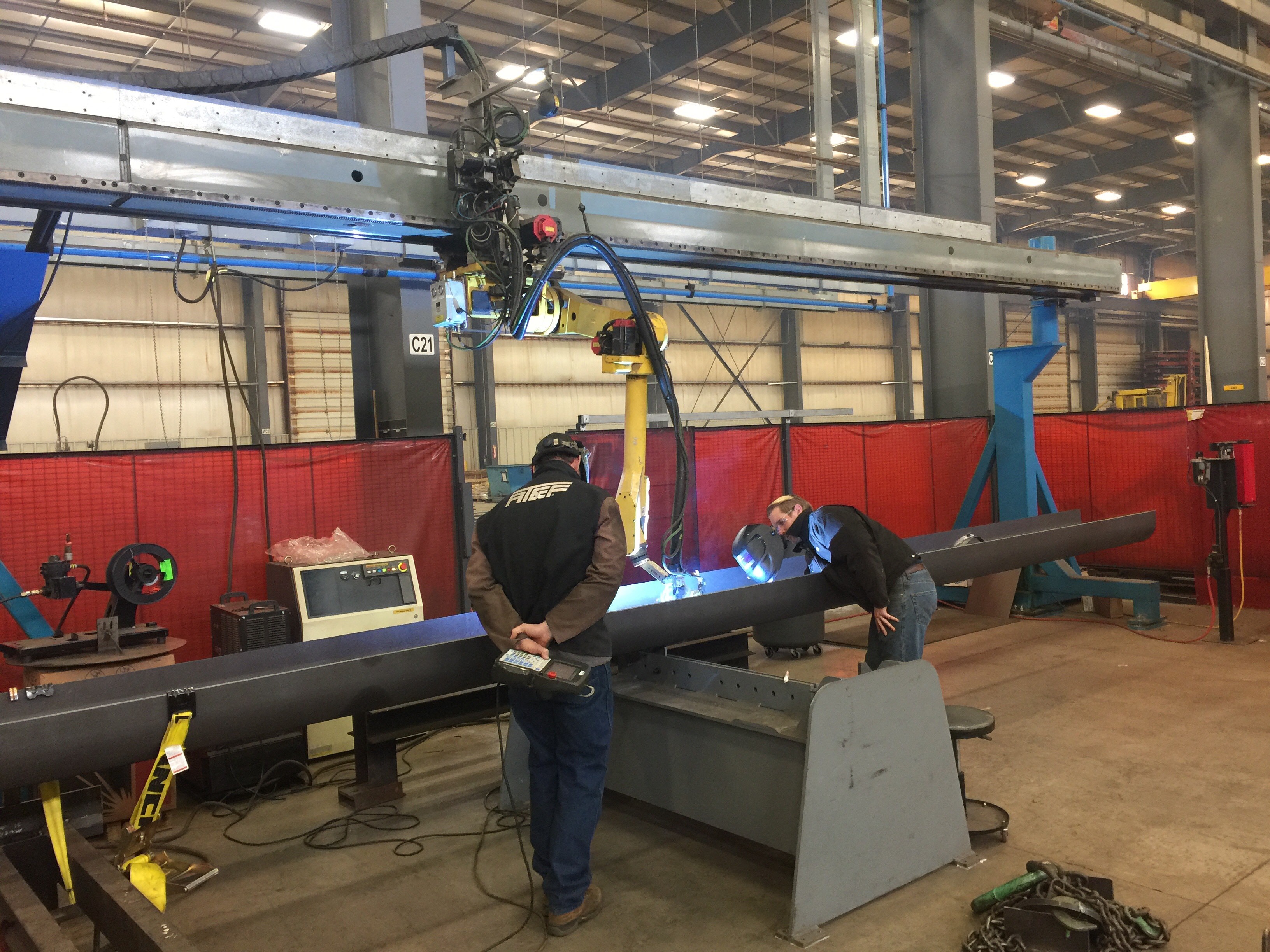Turning a plate of steel into a finished part takes specialized equipment and a deep understanding of what the plate undergoes during the process. From heavy cylinders to frame rails to crane booms, large structures can be formed with a high degree of control, but different projects call for different pieces of equipment. AT&F has world class equipment and expertise in metal forming going back to the 1940’s so you know your project is in good hands, no matter the size or dimensions.
Rolling is a process that uses three or four metal cylinders to bend metal and shape it into cylinders. It can take many passes before the plate is formed correctly, but a quality set of rolls can produce near perfect cylinders. Rolls range from tabletop size to room filling. AT&F Cleveland has the largest roll in the western hemisphere, capable of forming enormous cylinders easily. The bigger a roll gets, the tighter the tolerances on the workpiece are.
A press brake is a versatile piece of equipment. With it, one can bend thick pieces of metal with ease. Depending on the character of bend desired, one can easily switch out the dies and achieve a plethora of different bend types, from 90-degree V bends to round bends. This versatility also allows a press brake to take on unconventional tasks. With the proper bends at the correct angles, one can form cones, ovals, and cylinders to similar tolerances as a set of rolls. This operational diversity makes the press brake a valuable tool, but one must understand how metal responds to stress or the product will not be acceptable. One way to control the stress is to control the temperature of the steel.
When forming a piece of steel, one must always consider what optimal temperature the metal should be before putting it on the machine. Heating a piece of steel above a specific temperature affects the crystalline structure within the steel, making it more malleable and reducing stress after cooling and recrystallizing. This enables a fabricator to roll much heavier plates due to enhanced ductility. Cold forming is more difficult, but the resulting steel is stronger than a similar sized hot rolled piece. When cold forming a plate, the metal has a level of resistance called “springback” where the formed workpiece will bend back towards its original shape after forming. A fabricator must consider many factors before deciding what the temperature of the workpiece should be. Post-form strength, ductility, stress ratings, and final application all play a role in deciding whether to hot or cold form the plate.
 Knowing how the process works is as essential as having the tools to complete the job at hand. By investing in large-scale fabrication, AT&F has the ability to take on bigger projects than other fabricators. Large scale fabrication is a trademark of the enterprise, with heavy press brakes and rolls in every facility. AT&F India is outfitted with a 1000 metric ton press brake spanning over 20 feet, and AT&F Structures in Massillon, OH, has just added press brake capabilities to their tubular weldment operations. AT&F Cleveland boasts the largest set of plate rolls in the western hemisphere and the largest press brake in North America. The message is clear: AT&F has the bigger equipment for the bigger jobs.
Knowing how the process works is as essential as having the tools to complete the job at hand. By investing in large-scale fabrication, AT&F has the ability to take on bigger projects than other fabricators. Large scale fabrication is a trademark of the enterprise, with heavy press brakes and rolls in every facility. AT&F India is outfitted with a 1000 metric ton press brake spanning over 20 feet, and AT&F Structures in Massillon, OH, has just added press brake capabilities to their tubular weldment operations. AT&F Cleveland boasts the largest set of plate rolls in the western hemisphere and the largest press brake in North America. The message is clear: AT&F has the bigger equipment for the bigger jobs.
While there are no “magic charts” that can give you the perfect temperature and tonnage to apply to your particular material, there are minimum radii for material based on thickness. If too much force is applied to a cold workpiece, the metal can crack and fail. Click here to see some of the tables we use to choose the best bend for a specific material.
For more information on forming and AT&F’s unique capabilities, contact Rob Frieg at info@atfco.com.


 AT&F Cooks for the House
AT&F Cooks for the House